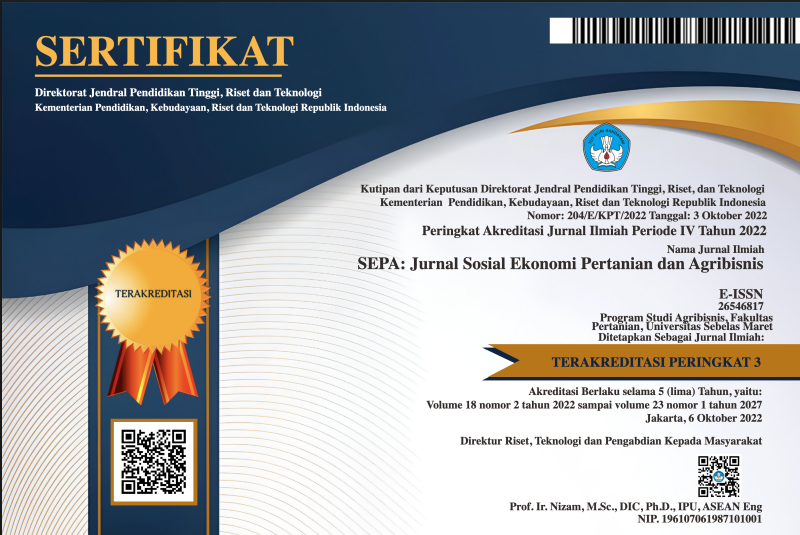KARAKTERISTIK TINGKAT KETAHANAN PANGAN RUMAH TANGGA PETANI BERBASIS AGROEKOSISTEM LAHAN SAWAH IRIGASI DI PROVINSI BALI
Abstract
Household food security level essentially is the ability of households meet food sufficiency. These capabilities are greatly influenced by many complex factors, but generally associated with changes in behavioral aspects of food production, consumption and allocation of households resources. The purpose of this study was to analyze the level of household food security based on low land rice irrigated. The study was conducted in three districts of rice production center in the province of Bali in 2012, i.e. Tabanan district, Gianyar and Buleleng. Data collection was conducted through interviews with 216 respondents. Household food security was measured by cross classification of the share of food expenditure and consumption of energy. The results of the analysis showed 58.33 % of households have a lower share of food expenditure and 41.67% household have higher share of food expenditure. In aggregate 86.57% of farm households is quite in consuming energy and 13.43% is less in energy consume. The level of household food security of farmers in the aggregate 49.07% of the household were categorized as secure, 37.9% as vulnerable, 8.79% as insufficient, and 4.17% as insecure. There is a correlation between the level of household food security with age of housewife, level of education, farm size and household income.
Keywords
food security; household; farmer; lowland rice
Full Text:
PDFDOI: https://doi.org/10.20961/sepa.v11i2.14176
Refbacks
- There are currently no refbacks.
This work is licensed under a Creative Commons Attribution 4.0 International License.



.png)







.png)
3.png)





